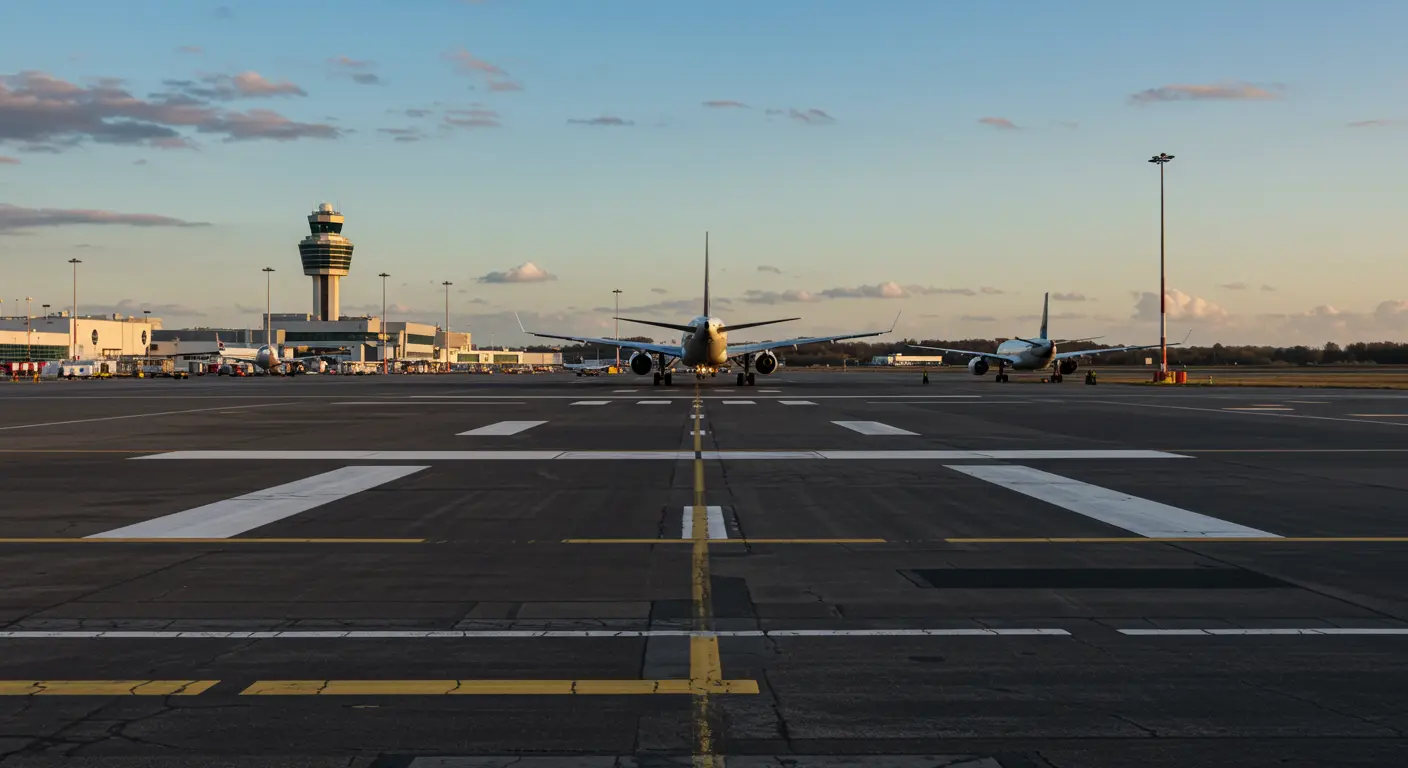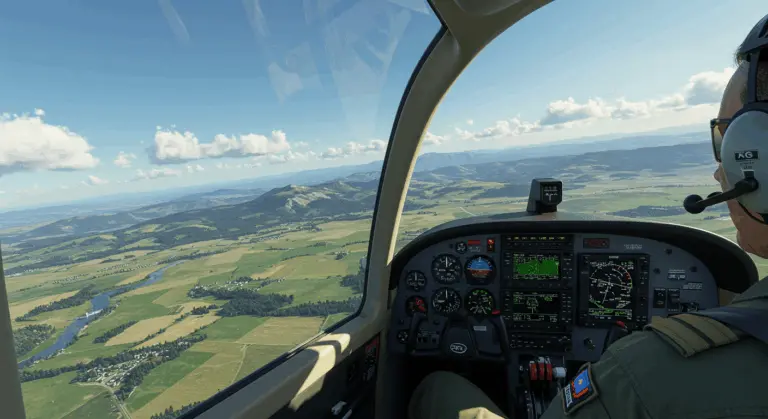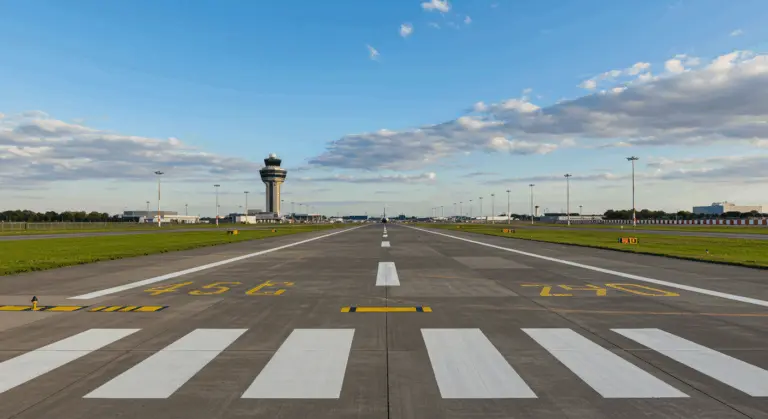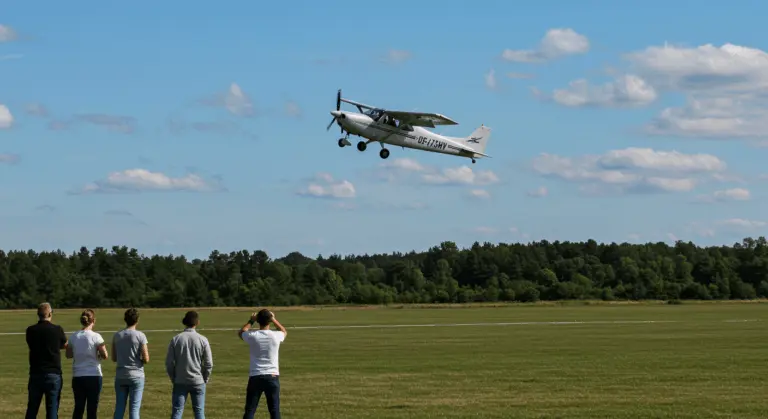Wake Turbulence Avoidance – Essential Strategies for Pilots
Understanding Wake Turbulence – What You Need to Know
Wake turbulence—an invisible atmospheric menace trailing behind aircraft—represents one of aviation’s most persistent safety challenges. This phenomenon manifests primarily through wing tip vortices and jet-wash, the latter being the turbulent stream of rapidly accelerated gases expelled from jet engines.
Wing tip vortices can shift from minor nuisance to serious hazard within moments. The turbulence intensity varies dramatically—from barely perceptible buffeting to catastrophic upset—depending on the generating aircraft’s mass, configuration, and precisely where a following aircraft intersects this invisible wake.
Wake turbulence becomes most dangerous during takeoff and landing phases. Here, aircraft operate at steep angles of attack, spawning vortices of maximum intensity. Airport environments compound this danger—multiple aircraft operating at reduced speeds and altitudes leave precious little room for recovery if problems develop. This combination of factors makes wake turbulence awareness and avoidance strategies essential knowledge for every pilot.
The Physics of Wake Turbulence – How It Forms
Wake turbulence formation follows precise but demanding aerodynamic principles. As aircraft generate lift, pressure differentials between wing surfaces create complex air movements. At each wing tip, high-pressure air beneath the wing spirals upward toward the low-pressure zone above, creating strong counter-rotating vortices that trail continuously behind the aircraft.
Picture horizontal tornadoes spinning off each wing tip—that’s the reality of wake vortices. Their intensity increases directly with aircraft weight while inversely relating to airspeed and wingspan. Heavy aircraft moving at low speeds create the strongest wakes, explaining why massive commercial jets leave such treacherous invisible trails.
Rotorcraft wake turbulence operates on similar principles yet exhibits distinctly different behavior patterns. Rotor blades generate vortices that corkscrew downward and outward, then bounce upward upon ground contact. This phenomenon intensifies dramatically at slower speeds—20 to 50 knots. Surprisingly, even lightweight two-blade helicopters can generate wake turbulence rivaling their heavier, multi-blade cousins.
Types of Aircraft and Their Impact on Wake Turbulence
-
Large Aircraft (e.g., Airbus A380, Boeing 747): Generate wake vortices of exceptional intensity, maintaining their dangerous strength for several minutes. These powerful vortices can overwhelm smaller aircraft’s roll-control systems entirely.
-
Medium Aircraft (e.g., regional jets, large turboprops): Generate moderate wake turbulence that requires careful consideration, especially for following light aircraft.
-
Light Aircraft: Produce relatively minor wake turbulence, but their vortices can still affect other light or ultralight aircraft.
Helicopters present a particularly unique challenge—they can produce wake turbulence far exceeding that of fixed-wing aircraft of equivalent weight. Their rotor wash can damage nearby aircraft components and ground equipment. This makes proper separation absolutely critical during any airport operations involving rotorcraft.
Strategies for Avoiding Wake Turbulence During Flight
Effective wake turbulence avoidance requires understanding vortex behavior and implementing proven flight strategies. The golden rule? Stay above preceding aircraft flight paths, especially those of larger aircraft. Since wing tip vortices descend steadily behind their generators, maintaining altitude above their trajectory provides your best protection from these unseen dangers.
Wind direction and velocity dramatically influence wake turbulence behavior. Vortices move with the wind with prevailing winds, so positioning upwind of a preceding aircraft’s path helps dodge their wake. Crosswind conditions create additional complexity—the upwind vortex lingers near the runway while its downwind partner can migrate across adjacent runways or taxiways, demanding heightened vigilance.
Timing becomes equally crucial. Wake turbulence requires several minutes to completely dissipate—waiting can prevent accidents. When following larger aircraft, pilots should request specific separation from Air Traffic Control if standard spacing seems insufficient based on conditions.
Takeoff and Landing Procedures to Minimize Risk
When departing behind larger aircraft, strategic rotation point planning is important. Rotate before the preceding aircraft’s rotation point, then climb quickly above their flight path. Intersection takeoffs demand extra caution—you’ll have reduced separation from preceding departures. Don’t hesitate to request delays from ATC if wake dissipation seems questionable.
Landing operations need careful attention. Touch down beyond the preceding aircraft’s touchdown point, particularly if they outweigh your aircraft significantly. This strategy works because wing tip vortices cease the moment an aircraft contacts the runway. Landing beyond this point avoids the wake turbulence area completely. Concerned about remaining runway length? Execute a go-around without hesitation.
Parallel runway operations present deceptive risks. Strong crosswinds can transport wake turbulence from one runway to another, creating unexpected hazards. Treat parallel runway operations with the same respect you’d give sequential operations on a single runway when crosswinds exceed 5 knots.
Understanding Wake Turbulence Categories
The International Civil Aviation Organization (ICAO) established wake turbulence categories based on maximum takeoff weight (TOW), creating a standardized framework for separation requirements. These categories provide essential safety guidance that help Air Traffic Controllers and pilots maintain critical safety distances during flight’s most vulnerable phases.
-
Super: Airbus A380.
-
Heavy: Aircraft with a Maximum Takeoff Weight (TOW) of 300,000 pounds or more.
-
Medium: Aircraft with an TOW between 15,500 and 300,000 pounds.
-
Light: Aircraft with an TOW of 15,500 pounds or less.
Consider this scenario: when a Light category aircraft follows a Heavy, significantly greater separation becomes mandatory compared to two aircraft of identical categories. These separation requirements come from extensive research into wake behavior and documented hazards.
Understanding your aircraft’s category and surrounding traffic classifications helps anticipate separation requirements. While ATC manages separation in controlled airspace, this knowledge becomes essential at uncontrolled fields where pilots must manage their own separation for safe operations.
The Role of Air Traffic Control in Wake Turbulence Management
-
Issuing Advisories: Controllers provide wake turbulence advisories to inform pilots about preceding traffic that could generate a significant wake.
-
Enforcing Separation Standards: ATC applies minimum time and distance intervals based on aircraft categories, requiring greater separation when smaller aircraft follow larger ones.
-
Sequencing Aircraft: Controllers strategically manage traffic flow, for example by alternating heavy and light aircraft, to minimize encounter risks, especially during high-volume periods.
Successful wake turbulence management depends on seamless pilot-controller coordination. ATC provides separation guidance, but pilots must voice concerns about wake turbulence and request additional spacing when standard separation appears insufficient for current conditions. This collaborative approach becomes essential in high-traffic environments where wake turbulence risks multiply exponentially.
Wake Turbulence Recategorization – What Pilots Should Know
The aviation industry has moved past traditional wake turbulence categories (Super, Heavy, Medium, Light) toward sophisticated recategorization systems. Initiatives like RELATED in Europe and RECTUS stateside create refined subcategories based on aircraft weight, wingspan, and specific wake generation characteristics. Pilots must familiarize themselves with these evolving classifications—they provide more accurate separation standards while optimizing airspace efficiency.
Under recategorized systems, aircraft previously lumped into identical broad categories may now require different separation standards. This refinement enables more efficient airspace utilization without compromising safety margins. Two aircraft types formerly classified as “Heavy” might now occupy different categories based on their unique wake signatures.
Modern technological advances like winglets may marginally reduce vortex strength, but don’t substantially change safe following distances or timing requirements. The fundamental avoidance strategies stay critically important—technology assists but can’t substitute for good decision-making.
When operating at airports employing recategorized wake turbulence systems, pilots need to stay especially alert regarding surrounding traffic. This includes understanding specific wake characteristics of various aircraft types—particularly helicopters, which generate unique wake patterns during hover-taxi operations across active runways. Remember: regardless of categorization sophistication, pilots retain ultimate responsibility for maintaining safe approach intervals and wake turbulence separation.
Monitoring and Measuring Wake Turbulence
-
Sound Tomography Systems: Use acoustic sensors to detect and visualize pressure variations caused by wake vortices in real-time.
-
High-Resolution Doppler Lidar: Employs laser light to scan airspace and provide detailed data on vortex behavior, including strength, position, and dissipation rates. This technology is commercially available at many major airports.
-
Optical Turbulence Measurement: Analyzes the distortion of light passing through turbulent areas to quantify turbulence intensity and characteristics.
These measurement technologies support continued research to refine wake turbulence models and separation standards. As understanding deepens, aviation authorities can develop increasingly precise guidelines that preserve safety while optimizing airport capacity. For pilots, awareness of these monitoring capabilities provides additional confidence in ATC-applied separation standards.
The Impact of Weather on Wake Turbulence
Weather conditions have significant impact over wake turbulence behavior, making weather knowledge essential for effective avoidance strategies. Wind stands as perhaps the most critical factor affecting wake vortex movement. In calm conditions, vortices descend predictably behind and below the generating aircraft’s flight path. However, even gentle crosswinds can trigger lateral drift, potentially steering vortices into adjacent flight paths or runways.
Crosswinds exceeding 5 knots can rapidly transport wake turbulence considerable distances from its origin point. This lateral migration may deposit vortices in completely unexpected locations, amplifying encounter risks for aircraft on parallel runways or nearby flight paths. Headwinds and tailwinds primarily influence vortex persistence in specific areas rather than their lateral positioning.
Atmospheric stability plays an equally significant role in wake turbulence persistence. Stable air conditions—often accompanying temperature inversions—can preserve vortex coherence and hazardous potential for extended periods. Conversely, unstable, turbulent air accelerates vortex breakdown, reducing their longevity and destructive impact.
Pilots must adapt wake turbulence avoidance strategies based on prevailing weather conditions. This means maintaining greater separation during stable atmospheric conditions, exercising particular vigilance in crosswind situations, and understanding how local terrain might influence wind patterns and consequent wake turbulence behavior. By incorporating weather factors into wake turbulence avoidance planning, pilots will significantly improve flight safety margins.







